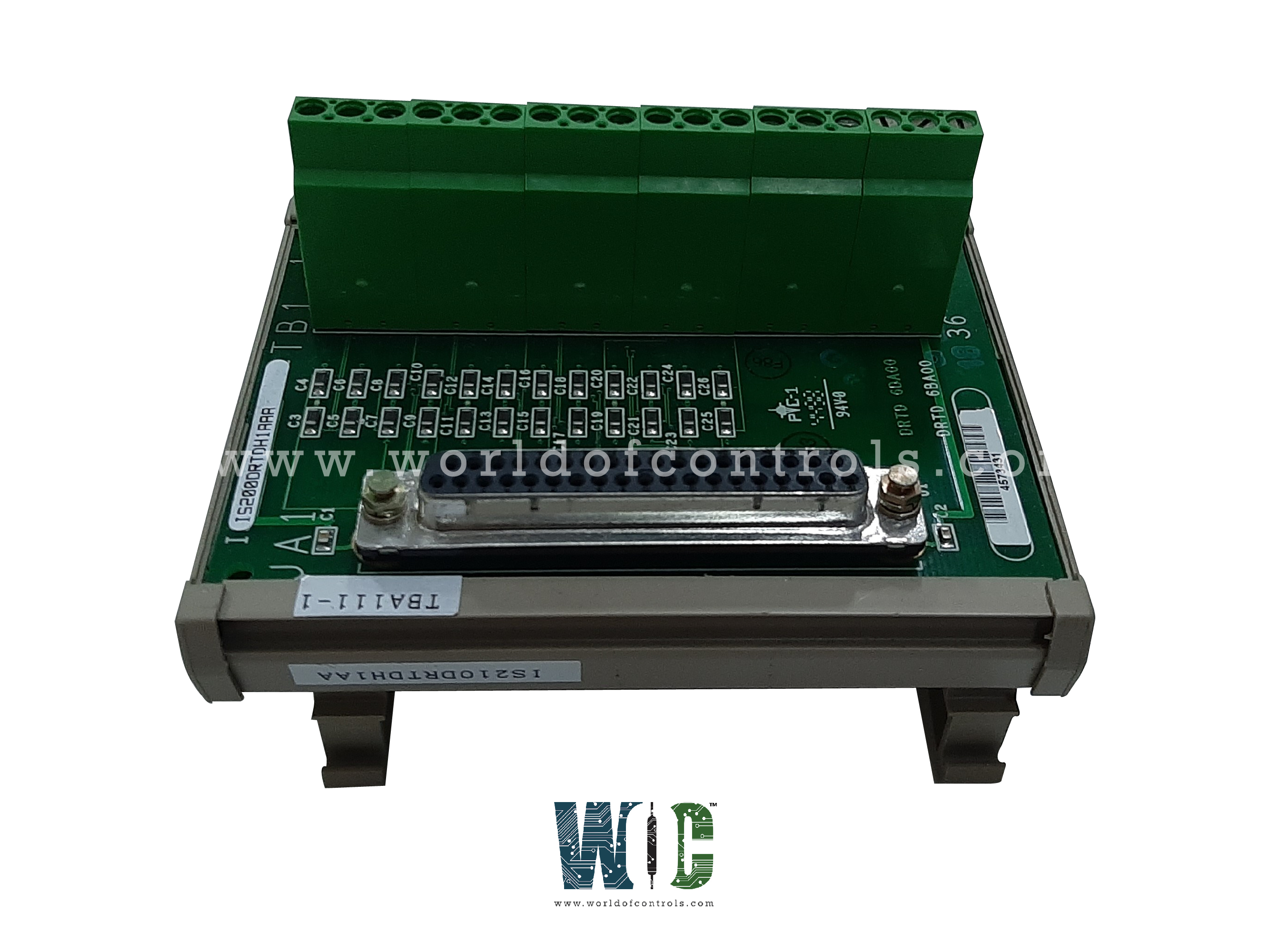
World Of Controls understands the criticality of your requirement and works towards reducing the lead time as much as possible.
IS200DRTDH1AAA - Simplex Compact RTD Input Terminal Board is available in stock which ships the same day.
IS200DRTDH1AAA - Simplex Compact RTD Input Terminal Board comes in UNUSED as well as REBUILT condition.
To avail our best deals for IS200DRTDH1AAA - Simplex Compact RTD Input Terminal Board, contact us and we will get back to you within 24 hours.
SPECIFICATIONS:
Part Number: IS200DRTDH1AAA
Manufacturer: General Electric
Series: Mark VI
Product Type: Simplex Compact RTD Input Terminal Board
Power Inputs: 10V
Input Voltage: 28V DC ±5%
Output Voltage: 12V DC ±5%
Maximum lead resistance: 15 Ohms
Dimensions: 16.51 cm × 17.8 cm
Mounting: DIN-rail mounting
Span: 0.3532
Operating Temperature: 0 to 55°C
Size: 16.51 cm High x 17.8 cm
Repair: 3-7 days
Availability: In Stock
Weight: 2 lbs
Country of Origin: United States
Manual: GEH-6421I
FUNCTIONAL DESCRIPTION:
IS200DRTDH1AAA is a Simplex Compact RTD Input Terminal Board manufactured and designed by General Electric as part of the Mark VI Series used in GE Speedtronic Control Systems. DRTD board is a compact RTD terminal board, designed for DIN-rail mounting. The board has eight RTD inputs and connects to the VRTD processor board with a single cable. This cable is identical to those used on the larger TRTD terminal board. The terminal boards can be stacked vertically on the DIN rail to conserve cabinet space. Two DRTD boards can be connected to the VRTD for a total of 16 temperature inputs. Only a simple version of the board is available.
INSTALLATION:
The DRTD board slides into a plastic holder that mounts on the DIN rail. The eight RTDs are wired directly to the terminal block. The Euro-Block type terminal block has 36 terminals and is permanently mounted on the terminal board. Typically, #18 AWG wires (shielded twisted triplet) are used. Terminals 25 through 34 are spares. There are two screws for the SCOM (ground) connection, which should be as short a distance as possible.
OPERATION:
The onboard noise suppression is similar to that on the TRTD. High-density Euro- Block type terminal blocks are permanently mounted to the board, with two screw connections for the ground connection (SCOM). An on-board ID chip identifies the board to the VRTD for system diagnostic purposes.
The terminal board supplies a 10 mA dc multiplexed (not continuous) excitation current to each RTD, which can be grounded or ungrounded. The eight RTDs can be located up to 300 meters (984 feet) from the turbine control cabinet with a maximum two-way cable resistance of 15 Ohm.
The VCO type A/D converter in the VRTD board uses voltage-to-frequency converters and sampling counters. The converter samples each signal and the excitation current four times per second for normal mode scanning, and 25 times per second for fast mode scanning, using a time sample interval related to the power system frequency. Linearization for the selection of 15 RTD types is performed in software by the digital signal processor.
WOC has the largest stock of OEM Replacement Parts for GE Speedtronic Control Systems. We can also repair your faulty boards and supply unused and rebuilt boards backed up with a warranty. Our team of experts is available around the clock to support your OEM needs. Our team of experts at WOC is happy to assist you with any of your automation requirements. For pricing and availability on parts and repairs, kindly contact our team by phone or email.
What is a Simplex Compact RTD Input Terminal Board?
The Simplex Compact RTD Input Terminal Board is a specialized terminal board used in control systems to interface with Resistance Temperature Detectors (RTDs). It provides accurate and isolated temperature signal inputs for monitoring and control.
What type of sensors can it support?
This terminal board is typically designed to support RTD sensors, particularly 2-wire, 3-wire, and 4-wire configurations. The most common RTD types compatible with this board include PT100 and PT1000 sensors, which are known for their precision and stability in temperature measurement.
How is the signal from the RTD processed?
The RTD signal, which is based on the sensor’s resistance change with temperature, is transmitted to the terminal board where it is conditioned. This includes amplification, linearization, and filtering to remove noise and ensure a clean, accurate signal.